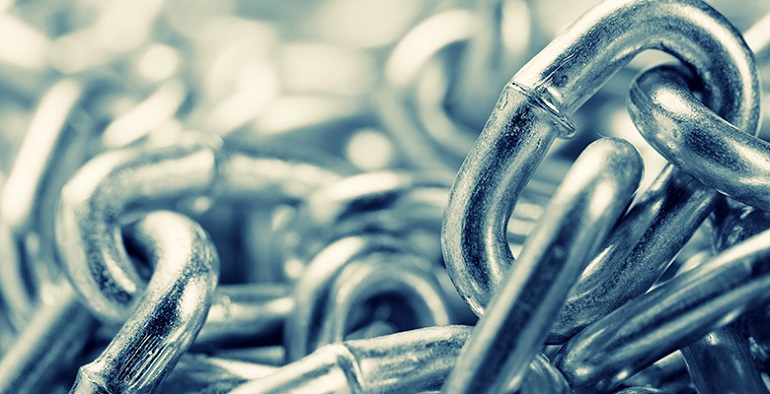Chains have been around for as long as most people know about themselves. We’ve all watched movies displaying ancient times and even there you can see chains used for various purposes – from workers dragging huge objects which are wrapped in chains, to chaining slaves as well as a wide array of other uses. But in modern times, chains serve a completely different purpose, thankfully. Every crane, boat and other heavy lifting vehicle that needs a strong grip on the object that it is lifting most likely has a durable chain.

There are three basic characteristics to look for in a chain: grade (metal tensile strength), coil (opening size) and diameter (thickness of chain). Additionally, keep in mind its finish and degree of corrosion resistance.
Grade
The chain grade refers to the tensile strength of the metal the chain is constructed from. The grade number is used by manufacturers to indicate the ultimate break strength of the chain. The higher the grade is, the greater the break strength. With galvanized chains it pretty much comes down to how much carbon is present in the steel. Grade 30, for example is also known as proof coil and it has less carbon so it’s used as a service duty chain. Grade 40 on the other hand, has higher abrasion resistance and higher tensile strength and comes with a much higher price tag.
Proof Coil
The proof coil is the term that refers to the standard commercial quality regularly stocked by industrial chains manufacturers and hardware stores. Proof coil is the grade 30 chain, and its main purpose is pulling or restraining applications. Proof coil is not for overhead lifting or where maximum impact strength nor maximum tensile is important. Basic carbon steel metal compositions make it the go-to metal for towing and log chains. This metal can look differently depending on how it’s finished. Standard finishes can be plain, bright zinc, hot dip galvanized or colored. Its tolerances aren’t as tight for inconsistencies in diameter and link size with proof coil, and it’s cost is lower than other chains.
Link Size
The chain link of the industrial chains varies. The long link is a practical choice where connections must fit the middle chain and not the end link. With longer links, shackle bolts fit anywhere along the length of the chain, while standard coil sizes may fit only shackles on end links. Long links also make the chain much lighter than the equivalent length of a standard chain.

